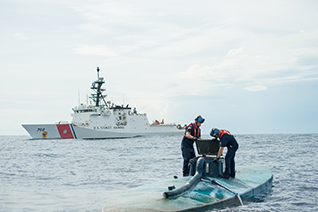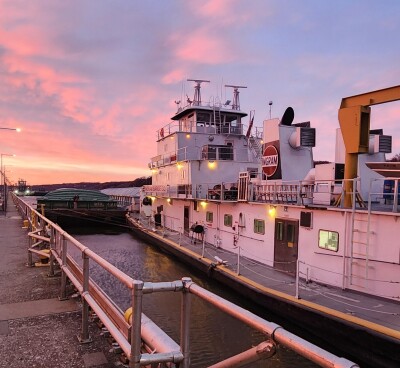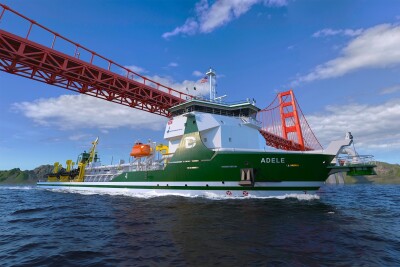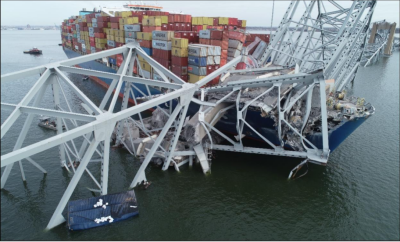The biggest bust yet of a cocaine-laden semisubmersible boat came in the Eastern Pacific when the Coast Guard intercepted a 16,000-lb. shipment in international waters, arresting the four-man crew and removing most of the drugs before the vessel sank in 13,000 feet.
Coast Guard officials say the July 19 seizure worth $181 million on the street was the largest since the use of self-propelled semisubmersibles was first documented in 2006. There have been 25 interceptions since then. Coast Guard officials recently told Congress that international drug gangs are building bigger and more sophisticated craft capable of delivering cargo directly to U.S. shores.
The 40’ cocaine carrier, painted sea-blue and with just its air intake, exhaust and a small conning station above the surface, was detected 200 miles south of Mexico by a U.S. Navy maritime patrol aircraft, and the U.S. Customs and Border Protection Office of Air and Marine continued air surveillance. The 418’ Coast Guard cutter Stratton, a Legend-class National Security Cutter based at Alameda, Calif., made the interception and put a boarding party aboard the semi-submersible.
The cutter’s crew offloaded 275 bales of cocaine, leaving 4,000 lbs. on board as ballast so the Stratton could take the boat under tow as evidence. But the boat began taking on water and sank before the tow could begin.
On their patrols the Stratton crew have interdicted or disrupted 15 different drug smuggling attempts since April, including a June 16 seizure of a semisubmersible carrying 5,460 lbs. of cocaine. In all the crew captured over 33,000 lbs. of cocaine worth more than $540 million in wholesale value since May.
That volume of drugs – and the street value of shipments that do get through – speaks to the power and wealth of drug cartels. In testimony before the House Subcommittee on Coast Guard and Maritime Transportation, top Coast Guard officials told members of Congress those organizations have growing maritime capabilities – “narco navies,” as some analysts have dubbed them.
With their low detectability, cargo capacity of five to seven tons and range up to 4,000 miles, the semisubmersible boats conceivably could carry a weapon of mass destruction to U.S. shores, said Vice Adm. Charles D. Michel, vice commandant for operations.
In 2013 Colombian forces discovered a true submarine with snorkel technology under construction in a clandestine shipyard. That vessel could have carried enough fuel to go non-stop to Los Angeles, Michel said.
“Our success intercepting this drug-laden, self-propelled semi-submersible is a testament to the collaboration of our partner agencies, and demonstrates the importance of our increased presence in the Western Hemisphere,” said Vice Adm. Charles W. Ray, commander, Pacific Area. “Every interception of these semisubmersibles disrupts transnational organized crime networks and helps increase security and stability in the Western Hemisphere.”





